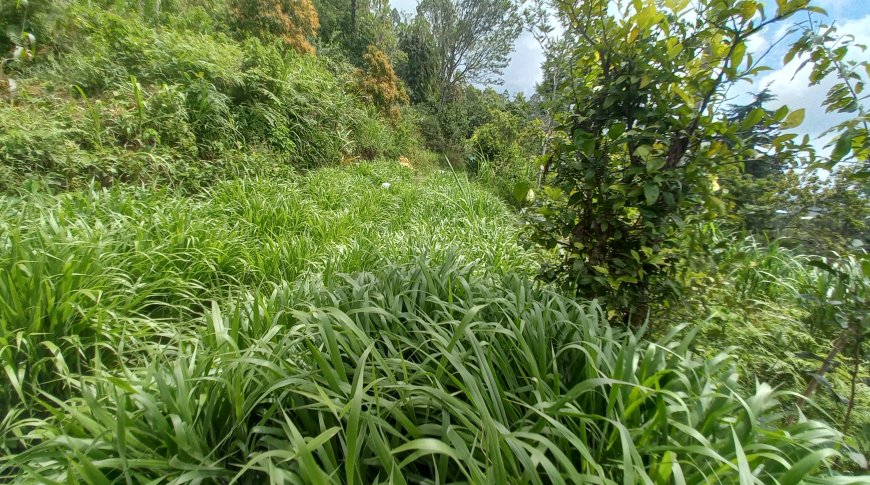Seed production bulking to address the challenge of livestock feeds

Kiambu,
Sunday December 10, 2023
KNA Wangari Ndirangu
Kenya usually faces a shortage of livestock feed and fodder year in year out and sustainable measures are therefore needed to reverse the situation.
According to the department of Animal feeds and nutrition at the Ministry of Agriculture and livestock, the country needs 55 million metric tonnes of feed annually but only provides 40 percent and most of it lost in post-harvest loses.
The Kenya Agricultural and Livestock Research Organisation (KALRO) has been working through community seed bulking initiative to produce, store and market seeds material for feed.
For the last three years, KALRO has been working with farmers around the seed production bulking that will be commercially made available to farmers and address the problem of availability of quality seeds in the country.
Under Integrated and Climate Smart Innovations for Agro-Pastoralists Economies and Landscapes (ICSIAPL) Project co-funded by the European Union and the Government of the Kingdom of Netherlands, KALRO has been undertaking the national performance trials working with the regulatory of seed body, Kenya Plant Health Inspectorate Service, (KEPHIS) to make sure that the varieties of seeds are registered and formally released.
Speaking when assessing the progress made by farmers in the last three years under the implementation of the ICSIAPL project in the counties of Narok, Taita Taveta and Kajiado, Dr Simon Kuria, Director at Arid and Rangeland Research Institute (ARRI) at KALRO-Kiboko said the process has already been completed for a number of varieties.
“Right now we have about three varieties that are being directly funded by this project, going through the process of national performance trials and the commercialisation of these seed varieties will be about building enough seeds, volume that can be given to farmers and seed companies on contractual arrangements,” he said.
He explained that the volume of seed required in the country is normally between 20 and 30 tonnes and yet only 10 tonnes is produced.
The certification process, Dr Kuria said is ongoing and that they are working together with KEPHIS and looking forward to getting the three varieties registered in the coming year 2024.
“What this means is there will be quality seeds that will be made available to our farming communities to be able to grow feed required in the country and address the livestock fodder deficit which stands at 60 Percent in the country, “Dr Kuria said.
A County like Taita Taveta, Dr Kuria said the deficit stands at 30 percent which is huge and It is the reason why animals with capacity to produce 20 to 30 liters of milk daily are only giving between eight and nine litres.
“This project was very spot on and we are looking forward to making sure that farmers can grow the feed they require to feed the animals to realise benefits,” he said adding they are also encouraging farmers to grow fodder commercially even if they do not have animals.
In support of fast-tracking adoption of improved forage seed varieties, Dr Kuria said the ICSIAPL project has established a Forage Seed and innovation Fund.
The Forage Seed Fund is meant to facilitate early adopters to try some of the forages showcased in the demo plots in their own farms at scale and for feeding to their Livestock.
Introduction, adoption and up scaling of the use of improved forage seed varieties will contribute significantly to increased productivity of the livestock sector in Narok, Kajiado and Taita Taveta and further contribute significantly to landscape and rangeland restoration.
The rationale of the Fund, he added was to facilitate a 3-step approach moving from demo plots initiated by the project for exposure and training, to subsidised seed for up scaling of selected forages from the demo plots by early adopters in their own farms to expand volumes and to trigger demand for seed from private seed companies, to commercial up scaling by seed companies.
“Farmers decide which fodder crops they want to continue with at the seed farm, they are then requested to apply for some seeds after graduating from the demos and those who qualify are given some crops, some seeds for two to three varieties as part of facilitating the technology adoption and scaling up,” Dr Kuria explained.
Through the seed fund, Dr Kuria said about a thousand farmers were supported in the three different counties while the Innovation Fund has supported just about 12 farmers, but to help them scale up on a much larger scale.
In this particular innovation fund, the project funds about 40 percent , whereas the farmers fund up to 60 percent of the budget and this is huge and involves also procurement of machinery to mechanise pasture and fodder production.
“Livestock contributes just about 12 to 15 percent to our national GDP as a country. We are hoping we can push that up to 20 percent. Put money in the pockets of our farmers, improve their livelihoods, and help them to become more resilient to the climate,”he said.
Kenyan farmers the Director noted are very hard working and just need to be given a little push through training, capacity development and bringing them the technologies that will drive agriculture and address matters food security.
Another component that the project included was integrated landscape management that involved using some of the grasses that were introduced particularly the regular grasses to facilitate and rehabilitate through reseeding.
Festus Mwamuye, Livestock Officer and TOT of the Mweri dairy group in Wonghonyi area from Taita Taveta County said most farmers got seeds from the demonstration plots and were able to plant them in their farms.
“These farmers used to rely on Napier (“Gongondi grass”) for many years without adding any palatability but now they know other different varieties that they can plant in their farms and since they now know the importance, they are able to get seeds and increase acreage on their farms for planting in bulk,” he added.
Mwamuye said the various varieties that the farmers are introducing in their farms will address the issue of most livestock farmers leaving their compounds to go source feed grass in the forests, on the side roads and even purchasing.
According to Danson Mwashigadi, a livestock farmer who has adopted the smart technologies under the project, most of them have now withdrawn from the commercial feeds that are expensive and now cut down on the cost of production which means the project has improved the livelihoods of the people and build their resilience to climate change.
In Kenya, natural pastures are the main diet for most of the ruminant animals including livestock such as cattle, sheep and goats whose diets comprise a significant proportion of grasses. However, the effects of drought, climate change, opportunistic cultivation, mismanagement and continuous overgrazing has resulted in diminished or even total loss of the most palatable and preferred forages, especially grasses, thus improved new forage seeds need to be developed and tested.
Courtesy; KNA
What's Your Reaction?































































































































































































































































































